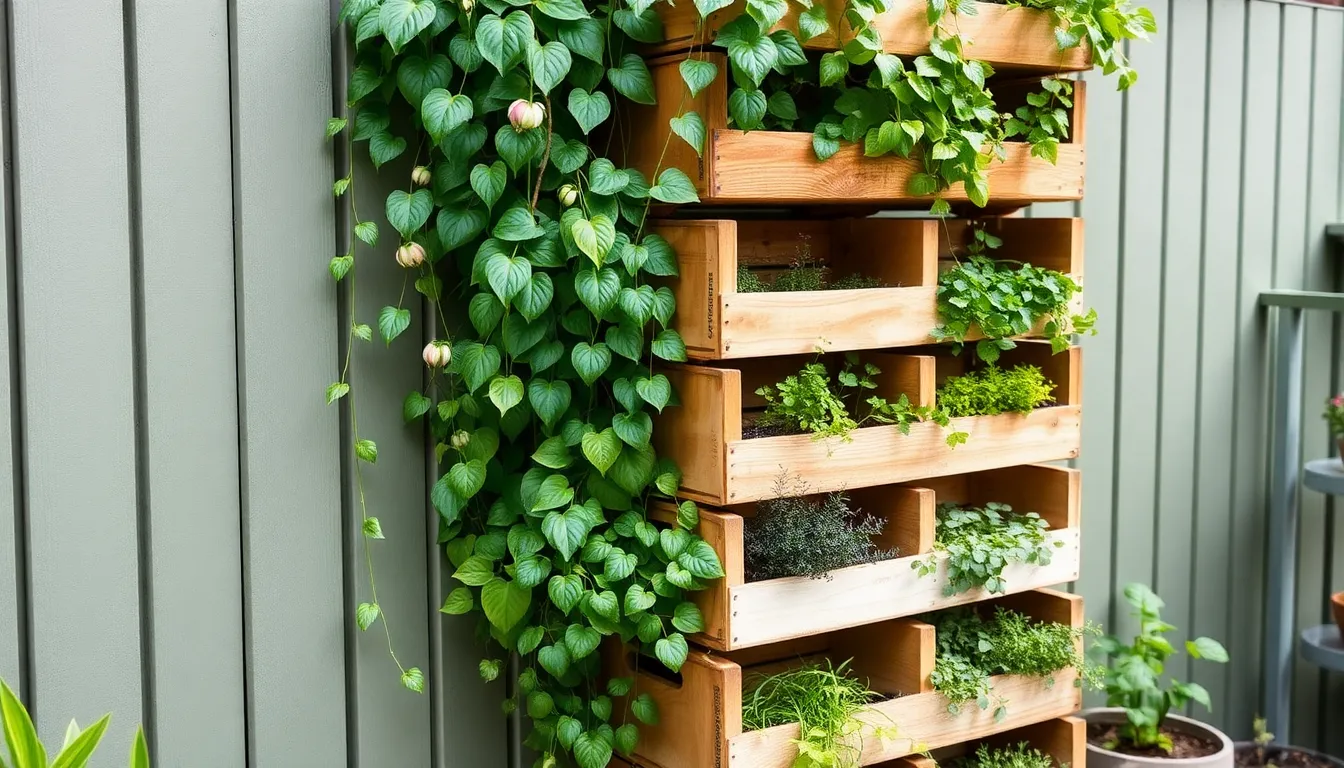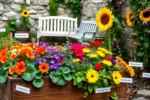Welcome to the world of vertical gardening, where innovation meets the joy of nurturing plants, and even the smallest of spaces can transform into lush, thriving green havens. Whether you’re a seasoned gardener looking to expand your horizons or a beginner eager to dip your toes into the soil, this guide is your ticket to discovering the endless possibilities of growing upwards.
In a world where space is often at a premium, our collection of vertical gardening ideas is not just a creative outlet but a practical solution for maximizing your green footprint. By the end of this journey, you’ll be equipped with techniques that promise not only aesthetic delight but also increased yields and a deeper connection to your garden.
Picture yourself harvesting fresh herbs from a living wall or admiring the cascading blooms of a vertical planter, all while basking in the satisfaction of your gardening success. With our enthusiastic guidance, you’ll find that creating a vertical garden is not only achievable but immensely rewarding, ensuring your confidence blossoms as beautifully as your plants.
Install Wall-Mounted Planters
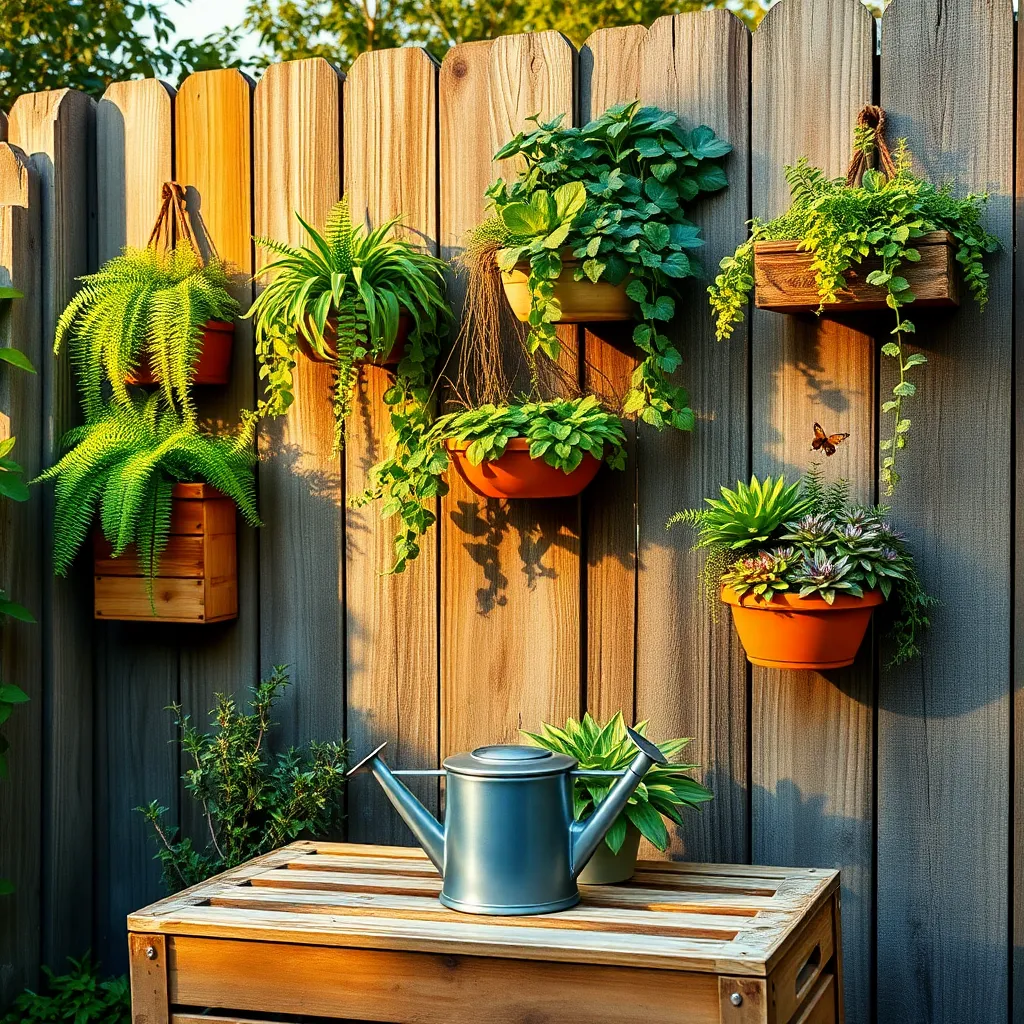
Wall-mounted planters are an excellent option for maximizing vertical space in small gardens, allowing you to grow a variety of plants even in constrained areas. To start, choose a sunny wall that receives adequate light, as most plants thrive with at least 6 hours of sunlight daily.
When selecting planters, consider materials that offer durability and aesthetic appeal, like ceramic or galvanized steel. Make sure the planters have adequate drainage holes to prevent waterlogging, which can lead to root rot.
Beginner gardeners can start with hardy plants such as succulents and herbs, which require minimal maintenance and are forgiving in challenging conditions. For a more advanced touch, try incorporating trailing plants like ivy or ferns, which add lushness and depth to your vertical arrangement.
Use a lightweight, well-draining potting mix to ensure your plants have the right balance of nutrients and moisture retention. Water your wall-mounted planters more frequently than garden beds, as they tend to dry out quicker, especially in warm weather.
To ensure even growth, rotate your planters or rearrange the plants periodically, allowing all sides to receive ample sunlight. Consistent monitoring and maintenance, such as pruning and fertilizing every few weeks, will keep your vertical garden thriving.
Choose Slim Trellis Designs

One effective way to maximize small spaces is by using slim trellis designs that are both functional and stylish. These designs allow you to grow a variety of climbing plants without taking up much ground space, making them perfect for balconies or small yards.
Choose materials like bamboo or metal that offer both durability and a sleek profile. Bamboo trellises are lightweight and natural-looking, while metal options provide a modern touch and can support heavier plants.
When selecting plants for your trellis, consider fast-growing climbers such as peas, beans, or clematis. These plants thrive with vertical support and can create a lush, green backdrop in no time.
Ensure your trellis is securely anchored to prevent it from toppling over as the plants grow and gain weight. Regularly check the stability, particularly after storms or heavy winds, to maintain the safety of your vertical garden.
For experienced gardeners, experimenting with espalier techniques on a slim trellis can be rewarding. This method involves training fruit trees or shrubs to grow flat against the surface, optimizing space and enhancing productivity.
Watering is crucial for vertical gardens, as plants may dry out faster in elevated positions. Use a watering can with a long spout to reach higher plants, ensuring even moisture distribution and healthy growth.
Utilize Hanging Pocket Gardens
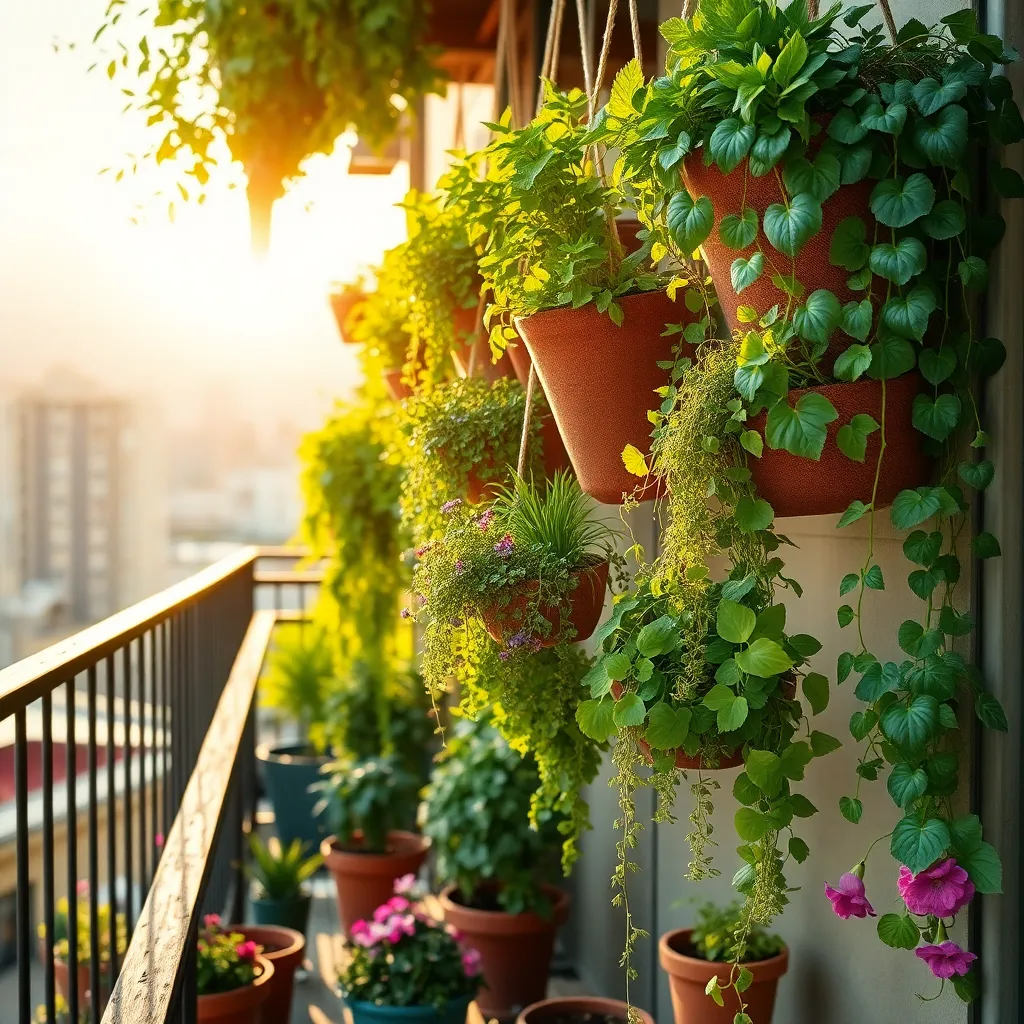
Hanging pocket gardens are a fantastic way to maximize vertical space in small areas, making them perfect for apartments or small balconies. These gardens typically consist of fabric pockets that can be hung on walls or fences, allowing you to grow a variety of plants without taking up floor space.
To get started, select a sturdy material for the pockets, such as felt or recycled plastic, which can hold soil and retain moisture. Ensure the material is breathable to prevent root rot and promote healthy plant growth.
Choose plants that thrive in small spaces, like herbs, succulents, or compact vegetables such as cherry tomatoes. Herbs like basil, mint, and parsley are particularly well-suited for pocket gardens, as they require minimal space and can be harvested regularly.
It’s important to use a high-quality potting mix that drains well and retains enough moisture for the plants. Water your pocket garden regularly, ideally when the top inch of soil feels dry to the touch, to keep the plants healthy and thriving.
For more advanced gardeners, consider integrating a drip irrigation system to ensure consistent watering. This technique helps maintain optimal moisture levels and reduces the risk of overwatering, which is crucial for pocket gardens.
Opt for Stackable Planter Systems
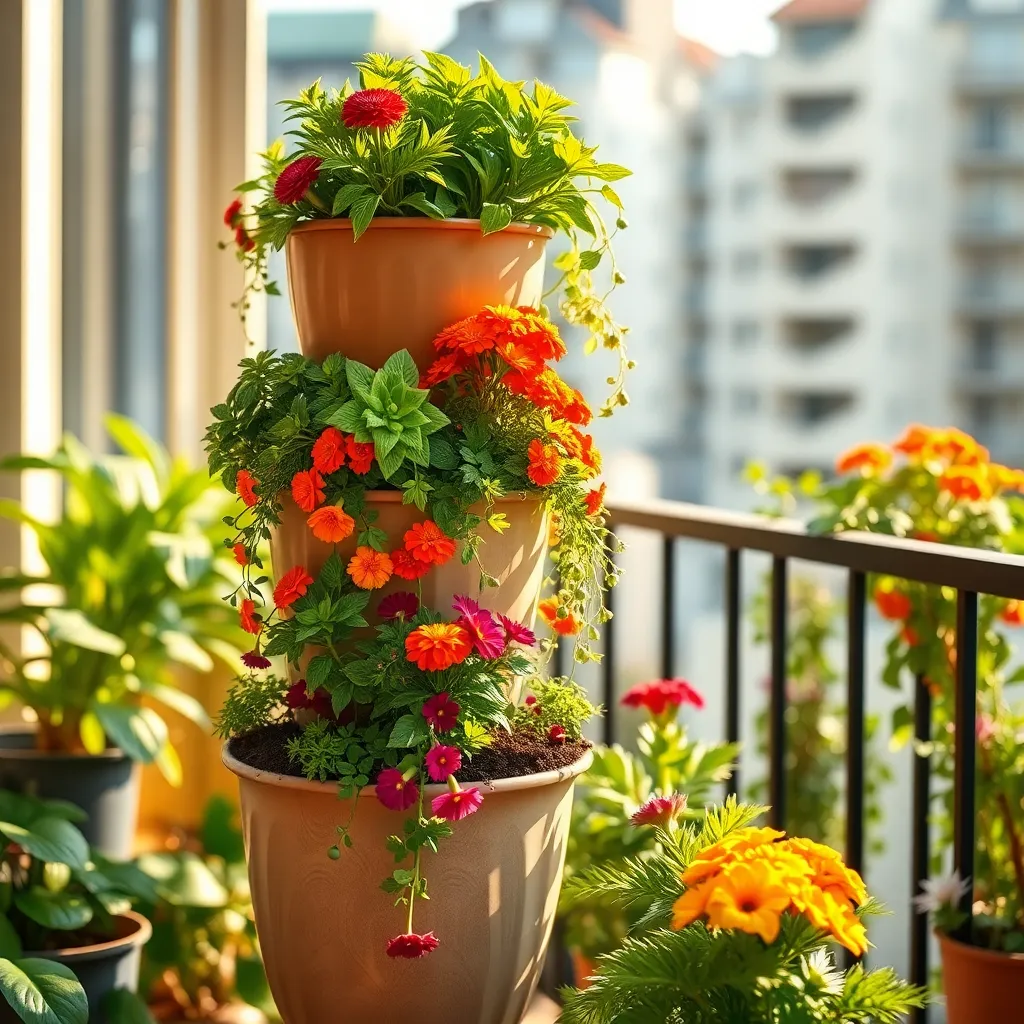
Stackable planter systems are an excellent choice for maximizing space in small gardens. These vertical structures allow you to grow a variety of plants in a compact area, making them perfect for balconies and patios.
To get started, look for stackable planters that have good drainage and are made from durable materials. Ensure each tier is securely fitted to prevent tipping, especially when filled with soil and plants.
For the best results, use a high-quality potting mix that retains moisture yet drains well. Consider adding a slow-release fertilizer to support your plants’ growth over time.
When selecting plants, opt for herbs, strawberries, or leafy greens that thrive in vertical arrangements. These plants typically require moderate sunlight, so place your stackable planters in a spot that receives at least 4 to 6 hours of sun daily.
Watering is crucial; stackable planters often dry out faster due to increased exposure. Check the moisture level regularly and water as necessary, aiming to keep the soil consistently damp but not waterlogged.
Advanced gardeners can experiment by stacking planters with a mix of companion plants, such as basil with tomatoes, to enhance growth and deter pests naturally. This technique not only optimizes space but also promotes a healthy plant environment.
Incorporate Vertical Herb Towers
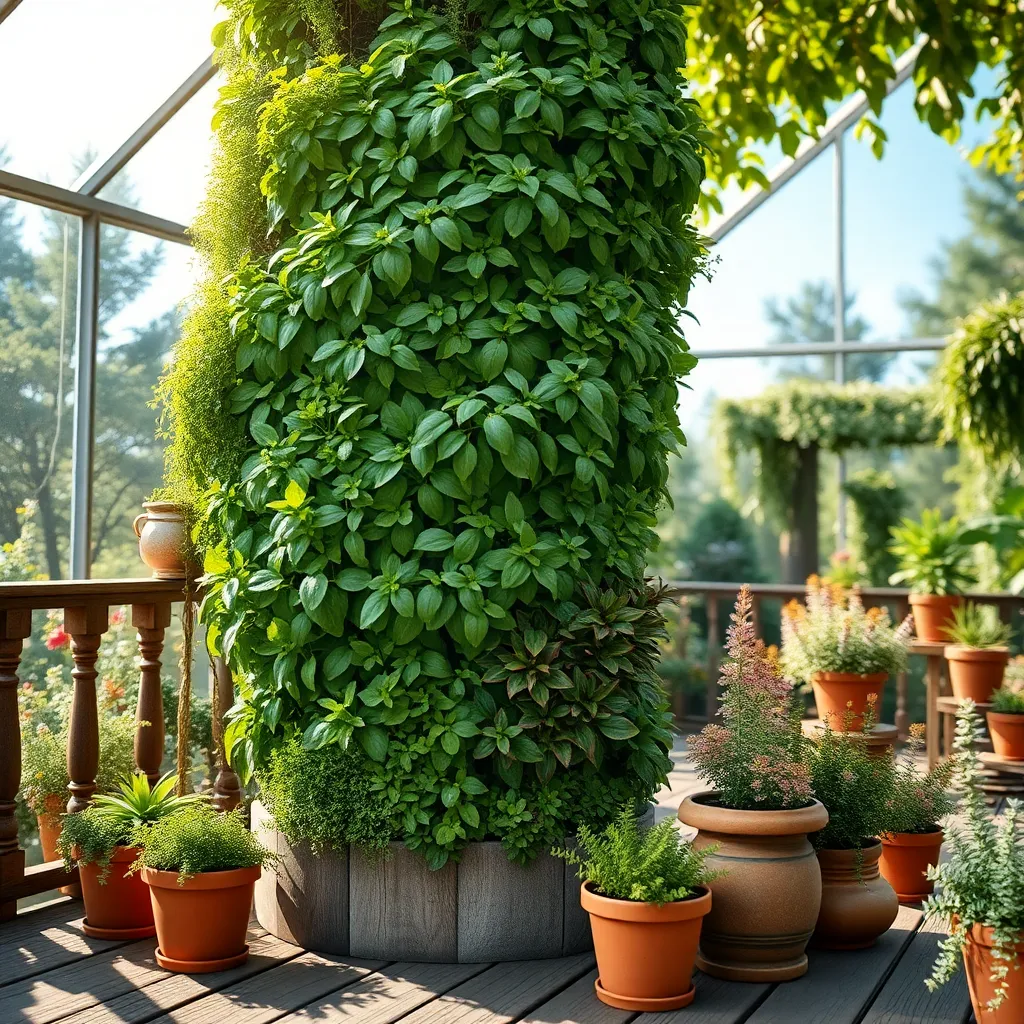
Vertical herb towers are a fantastic solution for gardeners looking to maximize space while maintaining a fresh supply of herbs. These towers can fit snugly in a corner of your balcony or patio, utilizing vertical space efficiently and beautifully.
Choose herbs that thrive in similar conditions to plant in the same tower, such as basil, oregano, and thyme, which all prefer full sun and well-drained soil. Use a high-quality potting mix with added perlite or vermiculite to ensure proper drainage and aeration.
Watering is critical for vertical herb towers, as they tend to dry out faster than traditional garden beds. Check the moisture level daily, especially during hot months, and water when the top inch of soil feels dry to the touch.
For beginners, start with a pre-made herb tower kit, which often comes with helpful instructions and a selection of easy-to-grow herbs. More experienced gardeners might enjoy constructing their own towers using materials like PVC pipes or stacked pots for a customizable approach.
Regularly harvest herbs to encourage bushy growth and prevent them from becoming leggy. Pinch back the top leaves of each plant, which not only provides you with fresh herbs but also promotes healthier, fuller plants.
Conclusion: Growing Success with These Plants
In exploring the vibrant world of vertical gardening, we’ve uncovered five key concepts that intertwine seamlessly with nurturing relationships: creativity, adaptability, nurturing, space management, and sustainability. Just as vertical gardening transforms small spaces with innovative solutions, relationships blossom when we creatively adapt to challenges, nurture growth, manage emotional space wisely, and aim for sustainable connections that endure the test of time.
As an immediate step, I encourage you to take the first step in creating your own vertical garden—a beautiful metaphor for cultivating a flourishing relationship. Whether it’s a simple herb wall or a more elaborate green tapestry, this project will serve as a reminder of the creativity and care required in both gardening and relationships.
Don’t forget to bookmark this article for future reference. As you tend to your physical and relational gardens, having a handy guide will empower you to revisit these insights, ensuring your relationship continues to thrive.
Looking forward, embrace the journey of growth and transformation with your partner. With dedication and a nurturing spirit, your relationship, much like a well-tended garden, can achieve lasting success and beauty.

